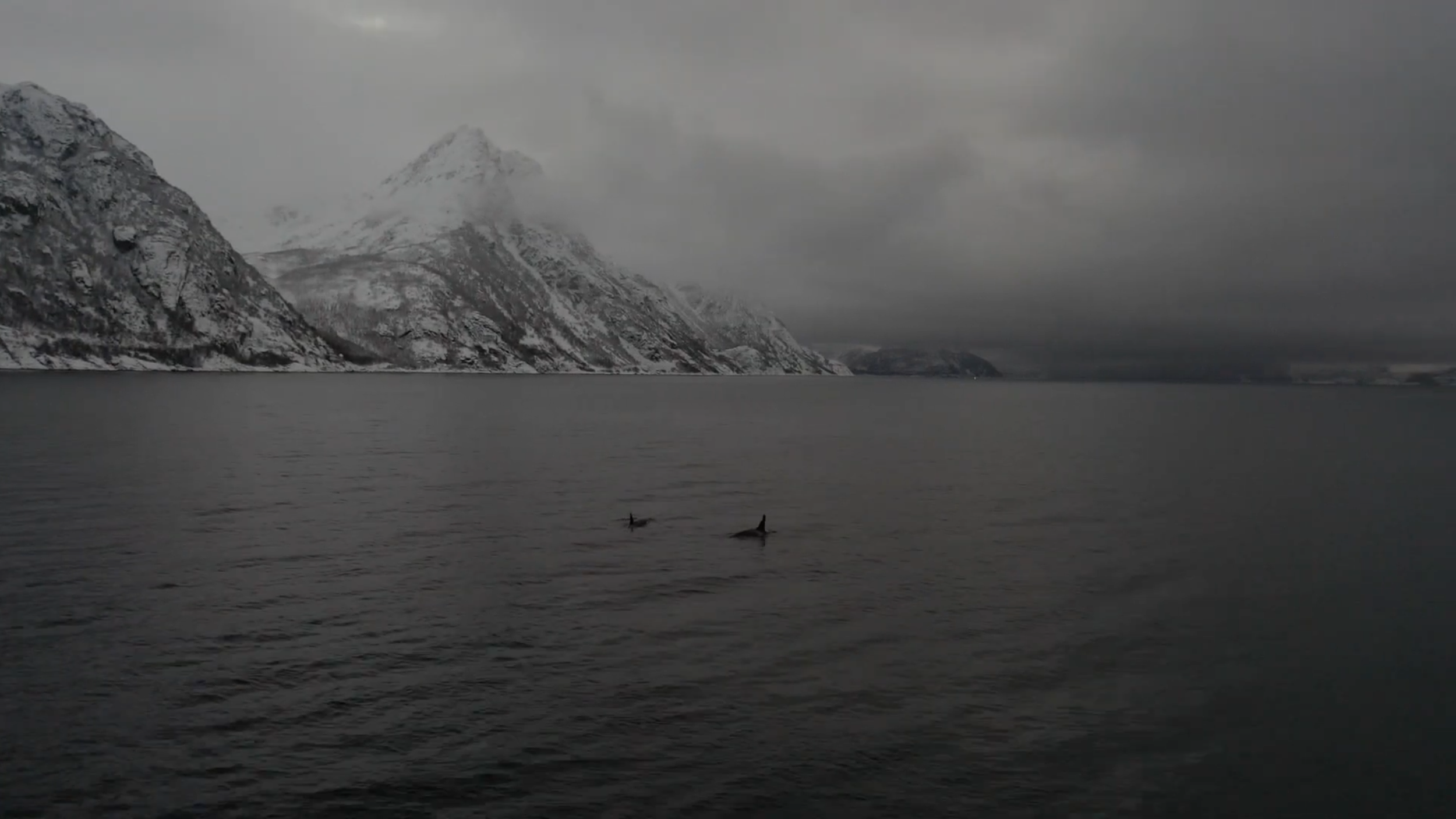
ORCAS TALK
A pilot expedition
ORCAS TALK
On location of a pilot experiment off the coast of Skjervoy, Norway, December 2021, Jörg Rychen, scientist at the Institute of Neuroinfomatics at ETH Zurich invited sound artist and performer Julie Semoroz to try some interactions with orcas and humpback whales by imitating their sounds and aligning to the rhythm of their vocalizations. The goal is to make it evident to them that our sounds are not random, but a reaction to their sounds.
Cetaceans have been shown to recognize themselves in a mirror. They recognize that the action of the mirror image is a direct reflection of their own actions. It was thought that by mirroring their acoustic behavior the animals could realize that this new sound source is related to their own vocalizations. The team speculated that they could become curious and try to explore this new sound source, in the same way as children explore the echo when walking through a tunnel. Observations were then made in search for any altered or untypical behavior that could hint towards a reaction to the original stimulus.
The expedition has raised many questions about the artistic sound practice as a leverage for science and artistic research. The ability to listen the orcas and whales as well as the possibility to interact in real time, brought a new level of experience. The element of water is completely different in the sound practice than the air. Exchanging with wild animals with sounds and music can trigger emotions and reveal a universal communication.
When interacting with non-humans, we are forced to change our point of view, to try and see things from the perspective of the animals in which we are communicating. In doing such an experiment, it is possible to actually build a relationship and a bond, not uniquely test animal reactions or decode their language capacity in their natural environment. The science wants to understand the mechanisms of the world and/or to crack the code of languages. Art is an open path to bond and resonate with life. Both are methods of research that can meet and exchange.
It is not possible to reach a scientific conclusion about the reactions of the animals, but this was never the objective. The goal rather, was to get a first “hands on” experience with a new underwater communication device and to start a discussion and formulate a hypothesis and eventually to design a more controlled study.
During this pilot experiment, the acoustic world these animals live in blew our mind away. All the team was deeply touched and after hours of interactions and listening sessions, we felt the desire to continue and seek bonding with these magnificent cetaceans. We want to make the public aware that these animals live an acoustic life that we must protect from noise pollution.
-
Underwater acoustic instruments: Jörg Rychen
Drone video: Alexander EckerleSound artist: Julie Semoroz
Sound video: Julie Semoroz, Myéline, 2021Video editing: Sophie Le Meillour
Voice over: William Spittlehouse -
Partnership: NCCR Evolving Language and #OceanEcho, City of Geneva, WIP Pro Helvetia
Special thanks to: Jörg Rychen (ETH, NCCR) Julie Semoroz (Sound artist) Alexander Eckerle, drone pilot and skipper (LMU Munich) Rebecca Kleinberger, interspecies communication research (MIT) Fiona Olivia Wuethrich (freediver) Elizabeth Ren, signal processing (ETH) Berenice Fischer, field assistant (ETH) Linus Rüttimann, field assistant (ETH)
-








